

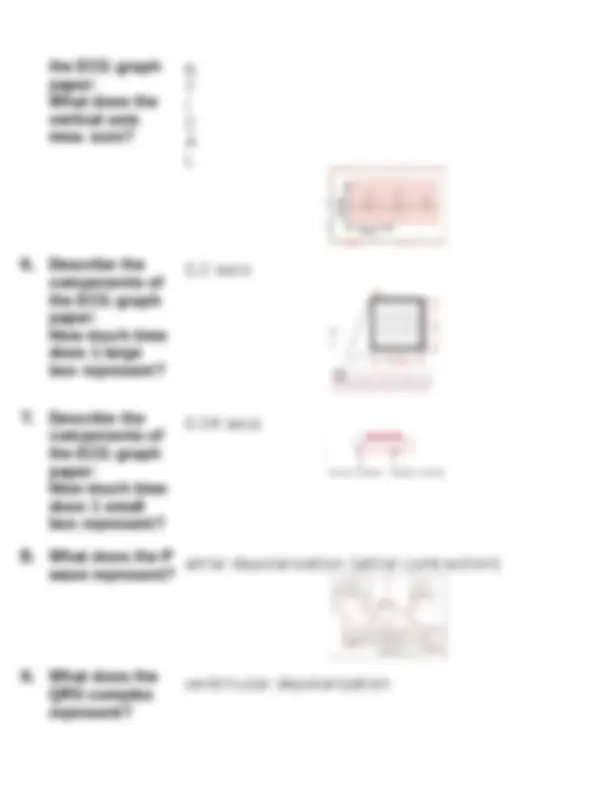
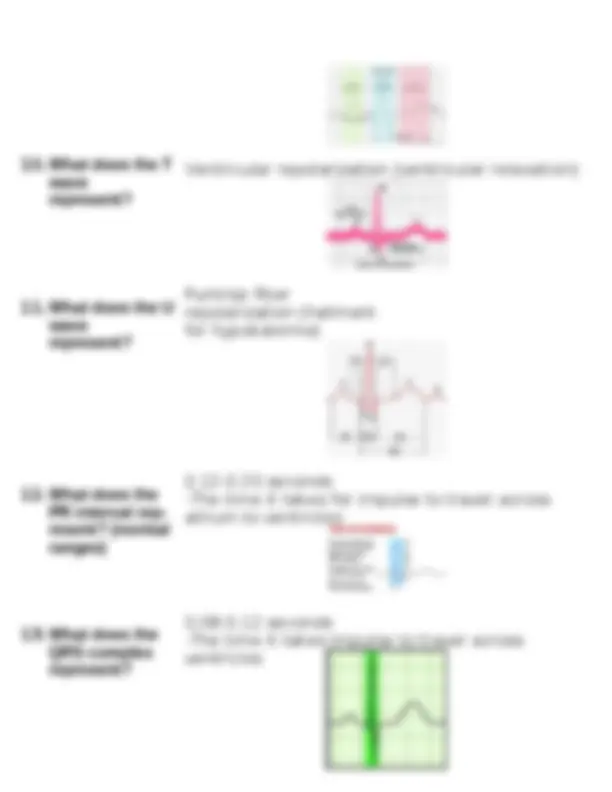
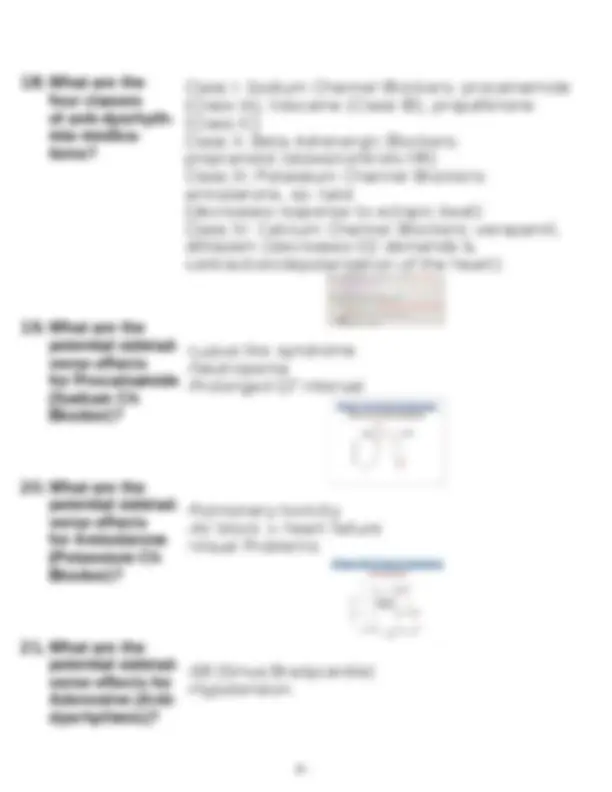
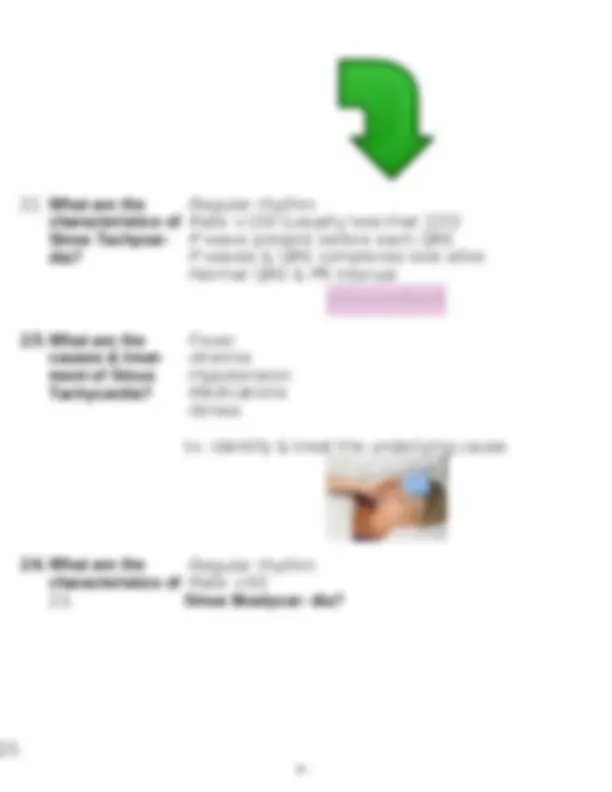

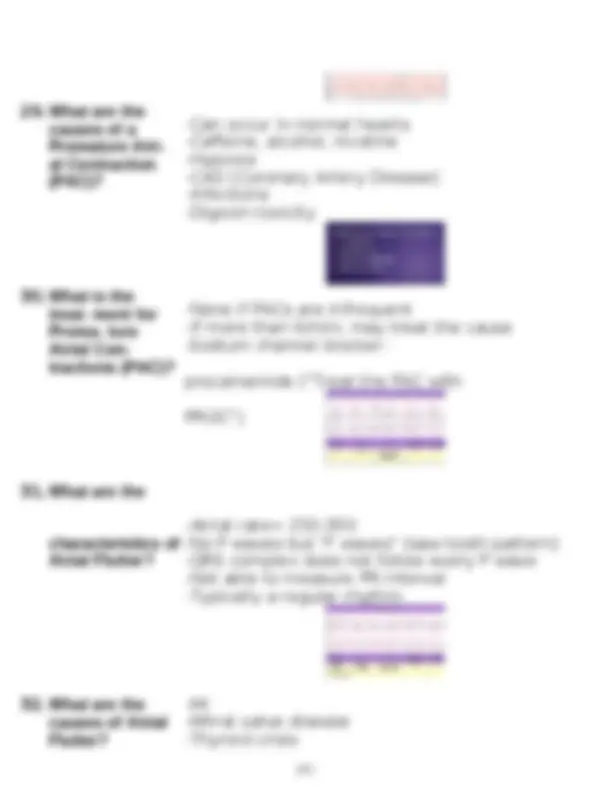

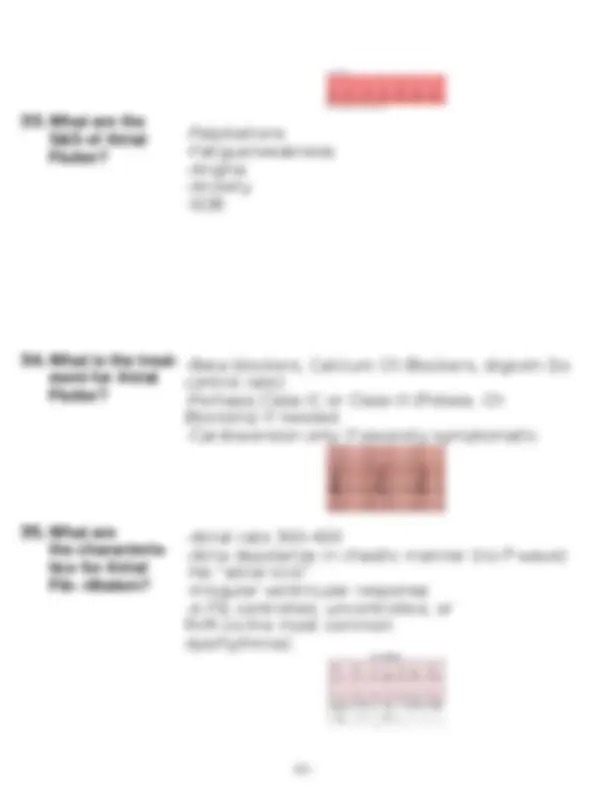
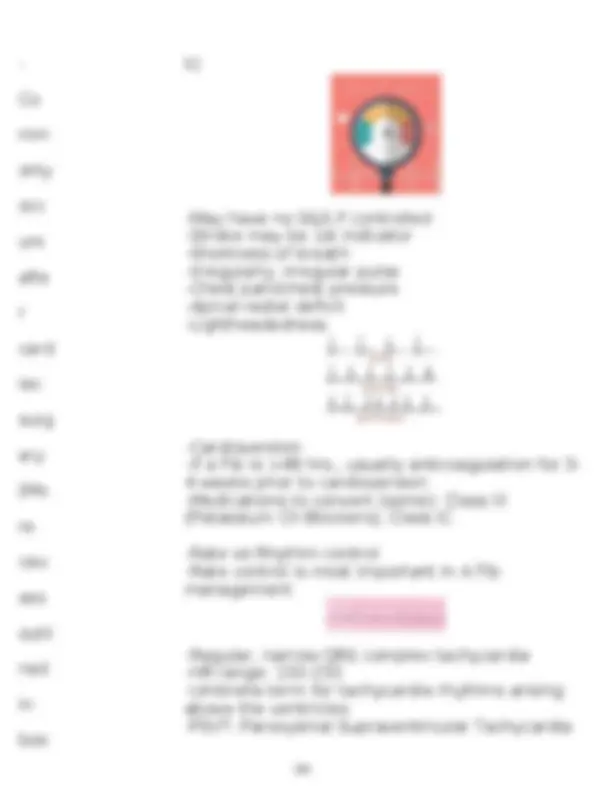
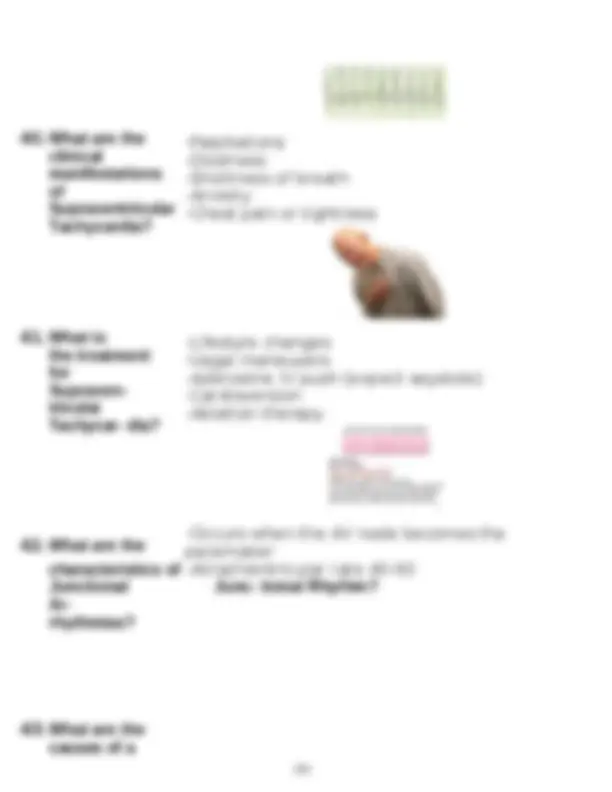
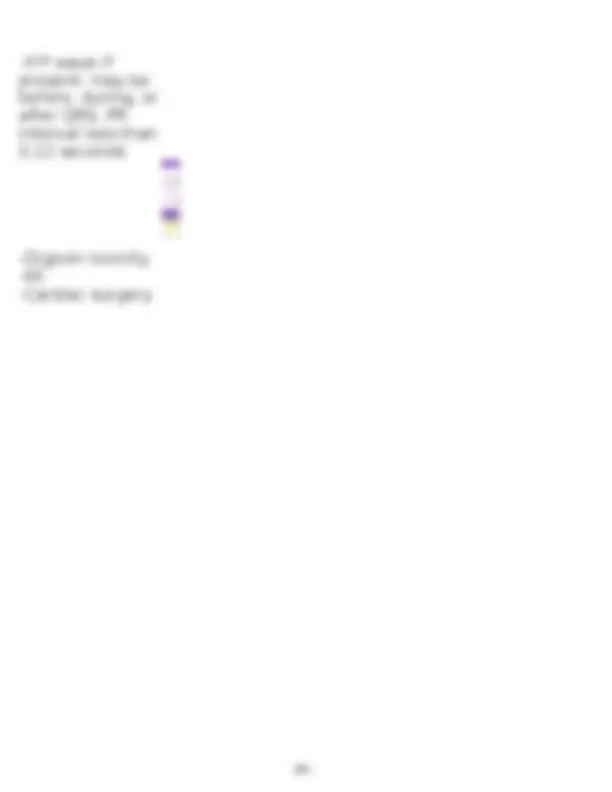
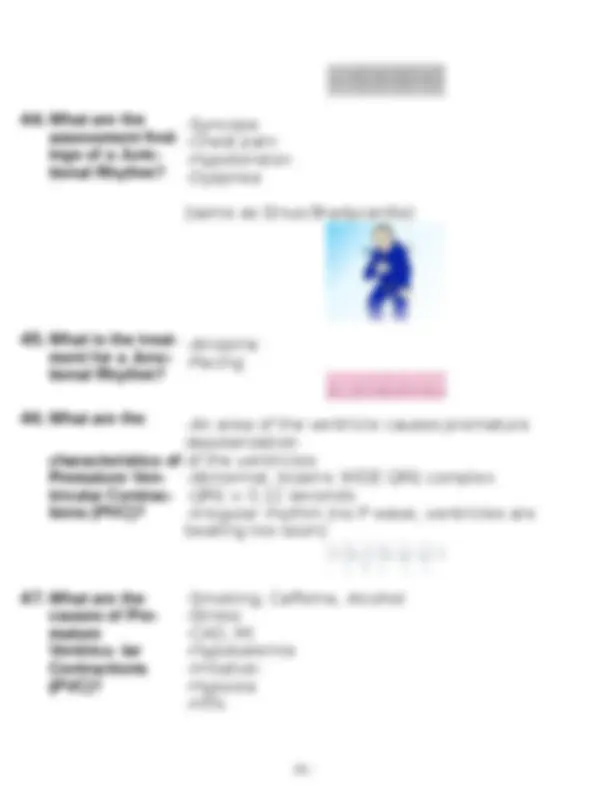
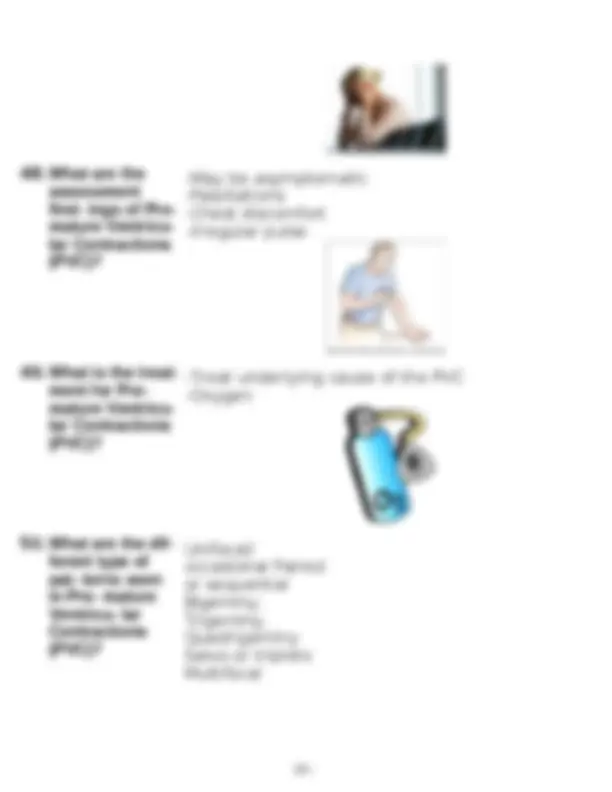
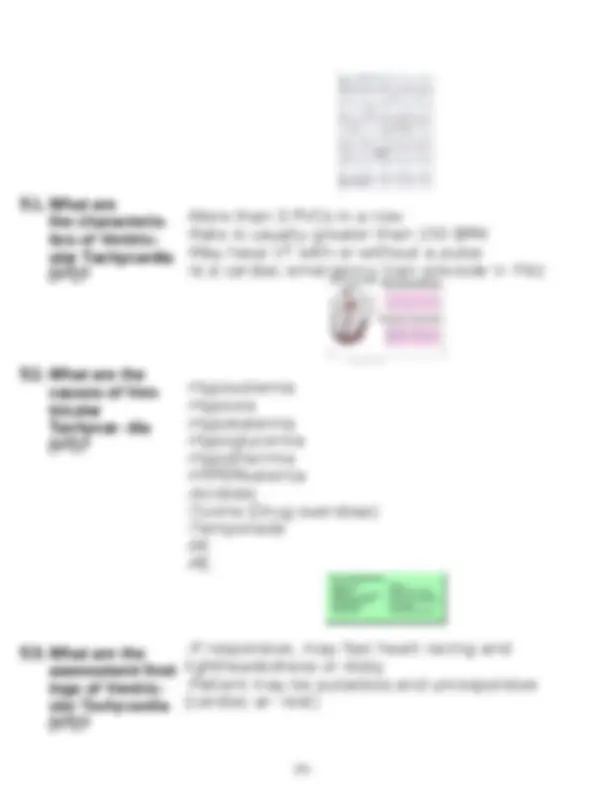
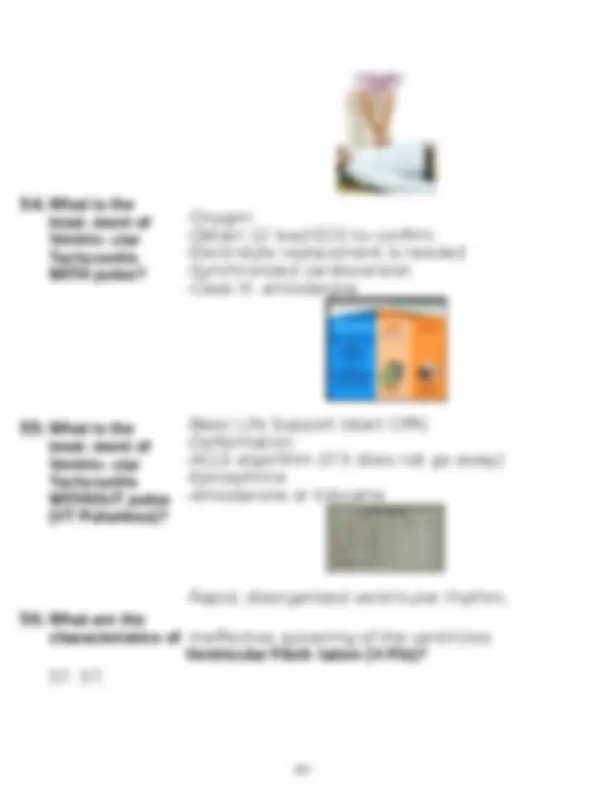

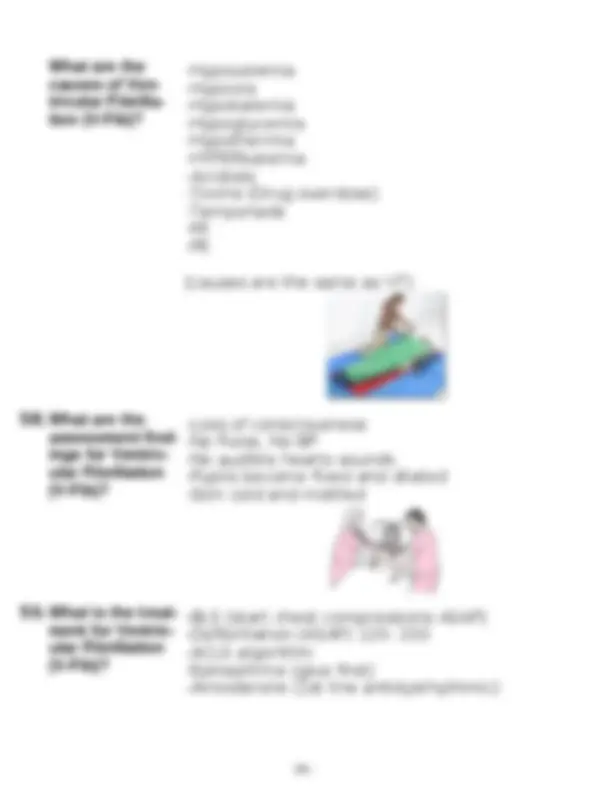



Study with the several resources on Docsity

Earn points by helping other students or get them with a premium plan


Prepare for your exams
Study with the several resources on Docsity

Earn points to download
Earn points by helping other students or get them with a premium plan
Community
Ask the community for help and clear up your study doubts
Discover the best universities in your country according to Docsity users
Free resources
Download our free guides on studying techniques, anxiety management strategies, and thesis advice from Docsity tutors
A comprehensive review of dysrhythmia topics, including the purpose of the 12-lead electrocardiogram (ecg), the components of the ecg graph paper, the interpretation of ecg waveforms, and the characteristics and management of various cardiac arrhythmias. It covers topics such as sinus rhythm, sinus tachycardia, sinus bradycardia, premature atrial contractions, atrial flutter, atrial fibrillation, supraventricular tachycardia, junctional rhythms, premature ventricular contractions, ventricular tachycardia, and ventricular fibrillation. The document also discusses the classification and mechanism of action of anti-dysrhythmic medications. This review material is designed to help students prepare for an exam on these critical cardiac topics, providing a detailed overview of the key concepts and their clinical applications.
Typology: Exams
1 / 27

This page cannot be seen from the preview
Don't miss anything!




















Administrator [Date] [Course title]
1. What is the path- way of an electri- cal conduction **in the heart?
the ECG graph paper: What does the vertical axis mea- sure?
6. Describe the components of the ECG graph paper: How much time does 1 large box represent?
0.2 secs
7. Describe the components of the ECG graph paper: How much time does 1 small **box represent?
10.What does the T wave represent? 11.What does the U wave represent? 12.What does the PR interval rep- resent? (normal ranges) 13.What does the QRS complex represent? Ventricular repolarization (ventricular relaxation) Purkinje fiber repolarization (hallmark for hypokalemia) 0.12-0.20 seconds -The time it takes for impulse to travel across atrium to ventricles 0.08-0.12 seconds -The time it takes impulse to travel across ventricles
18.What are the four classes of anti-dysrhyth- mia medica- tions? 19.What are the potential side/ad- verse effects for Procainamide (Sodium Ch Blocker)? 20.What are the potential side/ad- verse effects for Amiodarone (Potassium Ch Blocker)? 21.What are the potential side/ad- verse effects for Adenosine (Anti- dysrhythmic)? Class I: Sodium Channel Blockers: procainamide (Class IA), lidocaine (Class IB), propafenone (Class IC) Class II: Beta Adrenergic Blockers: propranolol (slows/controls HR) Class III: Potassium Channel Blockers: amiodarone, so- talol (decreases response to ectopic beat) Class IV: Calcium Channel Blockers: verapamil, diltiazem (decreases O2 demands & contraction/depolarization of the heart) -Lupus like syndrome -Neutropenia -Prolonged QT interval -Pulmonary toxicity -AV block > heart failure -Visual Problems -SB (Sinus Bradycardia) -Hypotension
w av e pr es en t be for e ea ch Q RS & all lo ok th e sa m e
Q RS co m pl ex es lo ok ali ke
No rm al
interval
What are the causes of Sinus Bradycardia? 26.What are the assessment find- ings of Sinus Bradycardia? 27.What is the treat- ment for Sinus Bradycardia? 28.What are the characteris- tics for Prema- ture Atrial Con- tractions
29.What are the causes of a Premature Atri- al Contraction (PAC)? 30.What is the treat- ment for Prema- ture Atrial Con- tractions (PAC)? 31.What are the -Can occur in normal hearts -Caffeine, alcohol, nicotine -Hypoxia -CAD (Coronary Artery Disease) -Infections -Digoxin toxicity -None if PACs are infrequent -If more than 6/min; may treat the cause -Sodium channel blocker: procainamide ("Treat the PAC with PROC") -Atrial rate= 250- characteristics of -No P waves but "F waves" (saw tooth pattern) Atrial Flutter? 32.What are the causes of Atrial Flutter? -QRS complex does not follow every P wave -Not able to measure PR interval -Typically a regular rhythm -MI -Mitral valve disease -Thyroid crisis
-Cardiac surgery -Digoxin toxicity
What are the causes for Atrial Fibrillation? 37.What are the assessment find- ings for Atrial Fibrillation? 38.What is the treatment/man- agement of Atrial Fibrillation? 39.What are the characteris- tics of Supraven- tricular Tachycar- dia?
40.What are the clinical manifestations of Supraventricular Tachycardia? 41.What is the treatment for Supraven- tricular Tachycar- dia? 42.What are the -Palpitations -Dizziness -Shortness of breath -Anxiety -Chest pain or tightness -Lifestyle changes -Vagal maneuvers -Adenosine IV push (expect asystole) -Cardioversion -Ablation therapy -Occurs when the AV node becomes the pacemaker characteristics of -Atrial/Ventricular rate 40- Junctional Ar- rhythmias? 43.What are the causes of a Junc- tional Rhythm?
-If P wave if present: may be before, during, or after QRS; PR interval less than 0.12 seconds -Digoxin toxicity -MI -Cardiac surgery